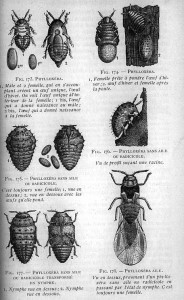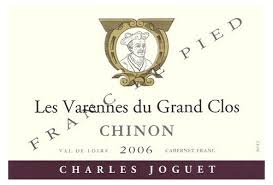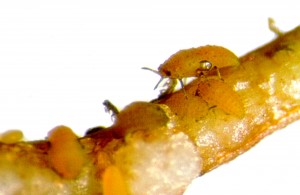By Thomas Parker (regular contributor)
An American louse that annihilated three quarters of French vineyards in the nineteenth century can also claim credit for helping shape the way wine is perceived today.
When phylloxera, an aphid-like insect, was inadvertently introduced to France in the 1860s, it quickly destroyed up to seventy-five percent of the country’s vines, sucking sap from their roots while simultaneously poisoning them. It took awhile to isolate the cause of the dying vines since the insects had always moved on when the roots of the dead plant were pulled up and inspected. It took even longer to ascertain that the insect had been transported from the United States where, ironically, most American vine rootstock was resistant to the insect’s ravages.
As France’s wine stock disappeared, and its winemakers went belly-up, a number of solutions were proposed and implemented. These ranged from aggressive chemical treatments in the vines, to releasing flocks of aphid-eating chickens in the vineyards, to placing toads under the vines to biologically terminate the menace. Nothing worked. France, a country whose very identity was tied to wine, not only faced a dry spell in its daily consumption, but also catastrophic economic consequences.
Finally, it was discovered that by grafting American rootstock to French vines, one could replant vineyards capable of withstanding phylloxera’s attacks. By the last quarter of the century the plan was in widespread implementation, and the country was on the route to a vinous recovery.
 Still, there were doubters. The “Chimistes,” proponents of a chemical attack, squared off with the “Américanistes,” proponents of using American rootstock, who, among other things, appeared unpatriotic in the eyes of the former. It seemed like sacrilege to create Frankenstein-like vines, tarnishing the purity of France’s national beverage with rootstock from the very country that caused the disaster
Still, there were doubters. The “Chimistes,” proponents of a chemical attack, squared off with the “Américanistes,” proponents of using American rootstock, who, among other things, appeared unpatriotic in the eyes of the former. It seemed like sacrilege to create Frankenstein-like vines, tarnishing the purity of France’s national beverage with rootstock from the very country that caused the disaster
Debates ensued on how American roots would change French wines. Some reports stated that the American rootstock produced grapes with more sugar and higher acid. Others contested these findings. Myriad other concerns included grape yields and how the longevity of wines would be affected. Most of all, producers and drinkers alike worried that American rootstock would affect the taste of the wines. Might it be that French wines would no longer taste entirely French?
Scientific authorities attempted to allay concern, reassuring the public that it was predominantly the “terroir”- that is, the soil and the geographic specificity of the vineyard – not the grape varietal or root type that gave wines their flavor. They promised that the inimitable flavor of France’s best wines would not be compromised. French wines would remain just as French as ever, notwithstanding the use of American varietals.
What is interesting to note is that, though the notion of terroir had already been around for hundreds of years, the French began to think of their wines in evermore terroir-specific terms in the years and decades following the attack of phylloxera. Flavors were increasingly correlated with the soil and its regional particularities (e.g. the different characteristics of the micro-regions of Burgundy) rather than, say, the grape type (e.g. Pinot Noir), which continues to be an essential identifying characteristic in the United States.
In other words, an American louse is in all likelihood partially responsible for the cultural construction of terroir in the French imagination, and the way wines are tasted today.

A handful of French producers currently experiment with native French rootstock called “Franc de Pied.” The vines succumb to phylloxera quickly unless they are planted in sandy soils, and even then have a short lifespan. The wine flavors, however, are startlingly different than those planted on American rootstock.

